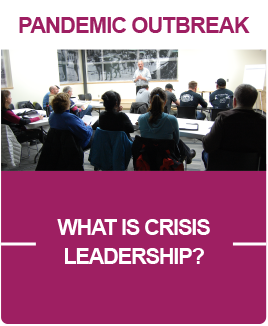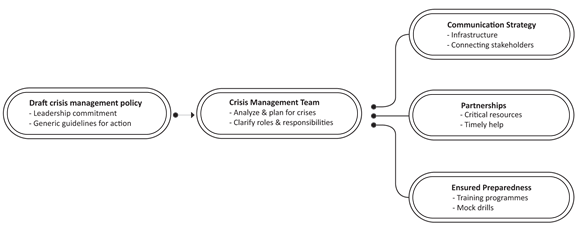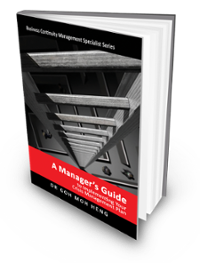Crisis Leadership
It can be argued that preparation may not be the key to managing a crisis; instead, organizations may want to focus instead on developing leadership skills and top communicators.
Organisation should identify who are the most effective individuals to lead during a crisis and enlist them in an organization's planning and on-going crisis management efforts.
There is strong evidence that the casual crisis approach from management is changing, and that organizational leaders are beginning to place more emphasis on reputation management and crisis planning. Despite the heavy emphasis on crisis planning, the profession of public relations should begin studying a new phase of crisis management by analyzing the leadership traits and qualities of individuals within the context of organizational CM planning. There is growing evidence that CM and leadership are closely intertwined.
 Define Crisis Leadership
Define Crisis Leadership
Crisis Leadership (Fener & Cevik, 2015) does not reflect personality but rather a relationship among the group members. Leadership becomes a function such as the work of a postman or police officer and it undertakes the functions of group organization, problem-solving and guiding.
- Intelligence, a strong personality, and intuition are necessary for leadership.
- A leader shall not have the power but also shall have the ability to use that power.
- Whereas management focuses on imitation and continuity of the present, leadership focuses on creativity, harmony and agility.
Manager Vs Leader
A leader does not always mean a manager. In states of crisis, an organization needs a leader more than a manager.
Below are some differences between a manager and a leader:
|
Manager |
Leader |
|
A person can be appointed as a manager. |
A person’s characteristic makes him/her a leader. |
|
Assignment of power is sufficient to become a manager. |
Assignment of power is not sufficient to become a leader. A leader needs also to be influential. |
|
Sets goals and direction, challenging the norm and seeks new ways of working towards goals |
Maintains the status quo and organize, direct and control to achieve goals |
|
Do things right |
Does the right thing |
|
Looks at the final total line of the end-of-period profit-loss chart |
Looks at the horizon line |
|
Focuses on systems, supervisions, processes, policies and the structure |
Focuses on reliability and human relations (Shelton, 1997) |
Qualifications of CM Leader/Managers
Qualifications of leader managers (Cener, 2007) regarding CM can be stated as below:
- The ability to catch the signals of crisis.
- Preparation and protection against the crisis.
- Efficient decision taking throughout the CM process.
- The ability to use power throughout the CM process.
- The ability to plan and organize the CM process.
- The ability to ensure communication throughout the CM process.
Competency for Crisis Leadership
What differentiates firms that thrive following a crisis from those that do not is the leadership displayed throughout the CM process. It builds on prior research and practical experience to introduce six competencies for leading amidst crises, including:
- Building a foundation of trust.
- Creating a new corporate mindset.
- Identifying the not-so-obvious firm vulnerabilities.
- Making wise and rapid decisions.
- Learning from crisis to effect change.
- Taking courageous action.
Crises challenge leaders to develop and practice the following:
- Heart and soul.
- Thinking
- Social and political skills.
- Technical skills.
- Integration
- Transfer
Crisis leadership is not just good for business; it is also good for the existential, emotional, and spiritual bottom line.
Most executives are aware of the negative consequences associated with an organizational crisis and focus on communications and public relations as a reactive strategy. However, many neglect the other leadership responsibilities associated with organizational crises. This may result from lack of formal training and on-the-job experiences that prepare executives to lead crises.
Executives who enable their organizations to recover from a crisis exhibit a complex set of competencies in each of the three phases of crisis:
- Pre-crisis;
- During crisis; and
- Post-crisis.
These competencies are:
- Signal detection;
- Preparation and prevention;
- Damage control and containment;
- Business recovery; and
- Reflection and learning.
CM Leadership Framework
A CM Leader must institutionalize the CM process to anticipate, prepare and mitigate an impending crisis. To ensure an effective CM mechanism leadership support and involvement is absolutely essential.
A Leader will start with:
- Setting the tone by clarifying the goals and purpose of CM plan, which essentially are based on the philosophy and values of the organization.
Helping the CM team draft the CM policy, which provides definitions for generally used terms and identifies different levels of the crisis in the organization. This demonstrates leadership’s commitment and promotes an enabling environment

Leadership framework for Crisis Management
- Appointing a core CM team for identifying all possible crises that the organization or any of its functional units may face. Also plans the roles and responsibilities for preparing and mitigating each of the crises.
- Empower the core CM team for studying and analyzing a crisis by various attributes such as industry, location, process, marketplace pressures, etc.
- Ensure effective and elaborate communication strategies and infrastructure even in the case of crisis / emergency / disaster, so that timely and consistent communication with internal and external stakeholders / partners is maintained at all times.
- Establish partnerships with external agencies so that relevant knowledge and physical resources are available to the organization in times of crisis.
- Ensure training about CM is imparted to the people who are involved, and organizational preparedness for facing the crisis is checked time to time through properly designed mock drills.
“Leadership” (Fener & Cevik, 2015) comes the first among the achievement criteria in crisis management. To call a person as a leader, he/she shall be able to unite people together and activate them, he/she shall leave a trace behind and create a difference. Having well behaviors and a message to deliver are two prerequisites of leadership. Leaders create a picture for the future with their cognitive and intellectual experiences. This is the vision of leaders. Leaders follow their messages and the people around them follow the leaders.
Goh, M. H. (2016). A Manager’s Guide to Implement Your Crisis Management Plan . Business Continuity Management Specialist Series (1st ed., p. 192). Singapore: GMH Pte Ltd.
Extracted from Chapter 25: Crisis Leadership.
Find out more about Blended Learning CM-300 [BL-CM-3] & CM-5000 [BL-CM-5]
 |
 |
 |
 |
![TMM [BL-CM-5]](https://no-cache.hubspot.com/cta/default/3893111/54680a64-9914-4958-8cec-1bc451ed5053.png) |
![[BL-CM] [5] Register](https://no-cache.hubspot.com/cta/default/3893111/82024308-16f4-4491-98be-818a882c6286.png) |
 |
Please feel free to send us a note if you have any of these questions to sales.ap@bcm-institute.org |  |




